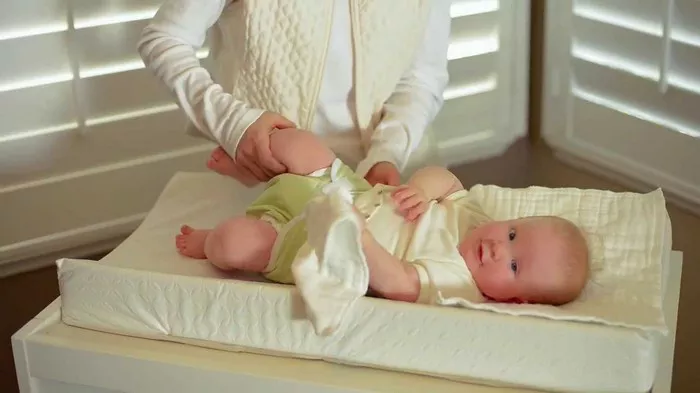Diaper rash is a common concern among parents, causing discomfort for babies and frustration for caregivers. While it’s typically not serious, it can be painful and irritating for infants. Fortunately, many effective remedies and preventive measures can be implemented at home to alleviate symptoms and promote healing. In this comprehensive guide, we’ll explore various methods for managing diaper rash and offer insights into preventing its recurrence.
Understanding Diaper Rash: Causes and Symptoms
Before delving into remedies, it’s essential to understand the root causes and symptoms of diaper rash. Diaper rash, also known as diaper dermatitis, typically manifests as red, inflamed skin in the diaper area. Several factors contribute to its development, including:
1. Friction: Constant rubbing and chafing against the diaper can irritate delicate skin.
2. Moisture: Prolonged exposure to urine and feces can weaken the skin’s natural barrier, making it more susceptible to irritation.
3. Microorganisms: Yeast and bacteria thrive in warm, moist environments, exacerbating diaper rash symptoms.
4. Sensitive Skin: Some babies have skin that is more prone to irritation, making them more susceptible to diaper rash.
Symptoms of diaper rash may vary in severity but commonly include redness, swelling, and discomfort in the diaper area. In more severe cases, the skin may become raw, blistered, or even bleed.
Effective Home Remedies for Diaper Rash
While over-the-counter treatments are available, many parents prefer to explore natural remedies first. Here are some effective home remedies for soothing diaper rash:
1. Frequent Diaper Changes: One of the most critical aspects of managing diaper rash is keeping the diaper area clean and dry. Change diapers promptly after they become wet or soiled to minimize exposure to moisture and irritants.
2. Gentle Cleansing: Use mild, fragrance-free wipes or a soft cloth with warm water to clean the diaper area during changes. Avoid harsh soaps or wipes containing alcohol, as they can further irritate sensitive skin.
3. Air Exposure: Allow your baby’s skin to air dry completely before putting on a fresh diaper. Consider letting your baby go diaper-free for short periods to promote airflow and healing.
4. Barrier Creams: Apply a thick layer of barrier cream or ointment to protect the skin from moisture and irritants. Zinc oxide-based creams are particularly effective in creating a protective barrier.
5. Oatmeal Baths: Adding colloidal oatmeal to warm bathwater can help soothe irritated skin and reduce inflammation. Gently pat the skin dry after the bath, avoiding rubbing, which can exacerbate irritation.
6. Coconut Oil: Coconut oil has natural antibacterial and antifungal properties, making it a popular choice for treating diaper rash. Apply a thin layer of coconut oil to the affected area to moisturize and protect the skin.
7. Cornstarch or Arrowroot Powder: Lightly dusting the diaper area with cornstarch or arrowroot powder can help absorb moisture and reduce friction, providing relief from diaper rash.
8. Breast Milk: For breastfeeding mothers, applying breast milk to the affected area can help speed up the healing process. Breast milk contains antibodies and moisturizing properties that promote skin health.
9. Probiotics: Some studies suggest that probiotics may help reduce the severity and duration of diaper rash by restoring balance to the skin’s microbiome. Consult with your pediatrician before giving probiotics to your baby.
10. Stay Hydrated: Ensuring your baby stays well-hydrated can help prevent urine from becoming too concentrated, reducing the risk of irritation.
Preventing Diaper Rash: Tips for Long-Term Management
While treating diaper rash is essential, preventing its recurrence is equally important. Here are some preventive strategies to keep diaper rash at bay:
1. Choose Diapers Wisely: Opt for diapers that are breathable and gentle on the skin. Consider using cloth diapers or eco-friendly disposables free of harsh chemicals and fragrances.
2. Avoid Tight Clothing: Dress your baby in loose-fitting clothing to reduce friction and allow for better airflow.
3. Limit Diaper Use: Whenever possible, give your baby some diaper-free time to allow their skin to breathe and recover.
4. Use a Diaper Cream Preventatively: Applying a thin layer of barrier cream with each diaper change can help prevent diaper rash by protecting the skin from moisture and irritants.
5. Practice Good Hygiene: Clean the diaper area thoroughly during each diaper change, and avoid using wipes or products that contain harsh chemicals or fragrances.
6. Monitor Diet: In some cases, certain foods in a baby’s diet, or breastfeeding mother’s diet, may contribute to diaper rash. Pay attention to any correlations between diet and diaper rash symptoms and consult with a healthcare provider if necessary.
7. Regular Diaper Checks: Check your baby’s diaper frequently for signs of wetness or soiling, and change diapers promptly to prevent prolonged exposure to irritants.
8. Address Underlying Conditions: If your baby frequently experiences diaper rash despite your best efforts, consult with a pediatrician to rule out any underlying medical conditions, such as allergies or infections.
9. Be Mindful of Teething: Teething can lead to changes in bowel movements, which may increase the likelihood of diaper rash. Be extra vigilant with diaper changes during teething periods.
10. Seek Medical Advice When Needed: If diaper rash persists or worsens despite home remedies and preventive measures, consult with a healthcare provider for further evaluation and treatment.
Conclusion
Diaper rash is a common concern for parents of infants, but with the right approach, it can be effectively managed and prevented at home. By implementing gentle cleansing practices, utilizing natural remedies, and taking proactive measures to protect and nourish your baby’s skin, you can alleviate discomfort and promote healing. Remember to monitor your baby’s skin closely, seek medical advice when needed, and prioritize your baby’s comfort and well-being above all else. With patience and care, you can help your little one stay happy, healthy, and rash-free.


